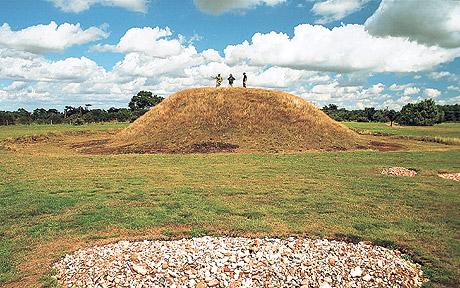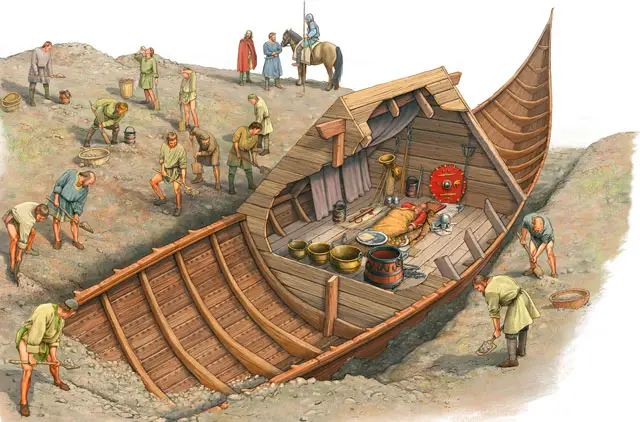Sometime in the 7th Century, a group of Anglo-Saxons living in what is now Suffolk and was then East Anglia buried a very important person, with a trove of grave goods, inside a ship, inside a mound of earth. Most of what those people buried survives today and is known as the Sutton Hoo burial.
 Of particular importance is the very large ship, which was found intact when British archaeologists dug beginning in 1939. The burial mound is not far from a tidal estuary that would have made a good fording place, 7 miles from the North Sea, near the harbor of what is now the Suffolk town of Woodbridge. The area nearby, along the River Deben bank, has given its name to the burial site. The East Anglians who buried the ship, person, and everything else would have dragged the ship from the water to the mound.
Of particular importance is the very large ship, which was found intact when British archaeologists dug beginning in 1939. The burial mound is not far from a tidal estuary that would have made a good fording place, 7 miles from the North Sea, near the harbor of what is now the Suffolk town of Woodbridge. The area nearby, along the River Deben bank, has given its name to the burial site. The East Anglians who buried the ship, person, and everything else would have dragged the ship from the water to the mound.
Other burial grounds nearby are older. Other ships are buried elsewhere in England. It is at Sutton Hoo, however, that archaeologists have found what they consider a treasure trove or riches that provide a window into how people at that time lived, not only in the Kingdom of East Anglia (which suffered major devastation at the hands of the invading Vikings, who destroyed many historical records) but also in the surrounding kingdoms.

None of the ship's original timber survives, but stains in the sand had preserved the shape of the ship. Stem and stern posts 14 feet high were either end of an 89-foot-long boat. It is the most complete Anglo-Saxon ship ever found. It is also longer than many of today's largest ocean-going yachts. The ship, made of oak, would have been heavy to push, pull, or drag.
No body was found inside the ship. Archaeologists think that the surrounding soil has so much acid that it dissolved the body.
Part 2: Who They Think It Was